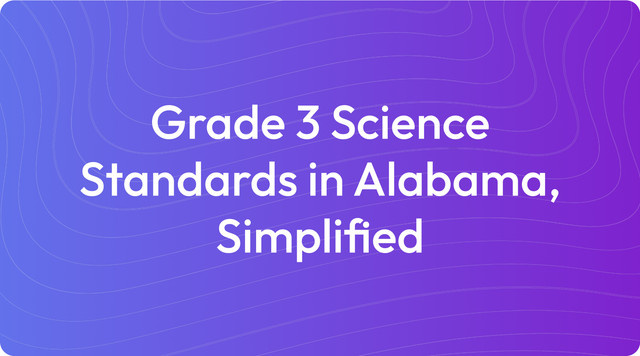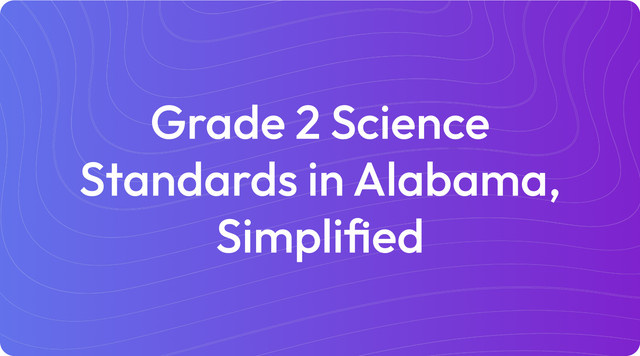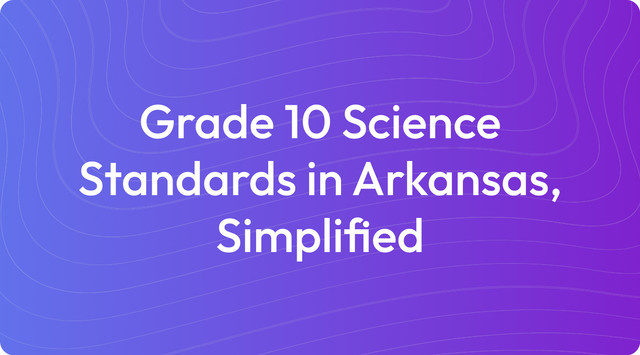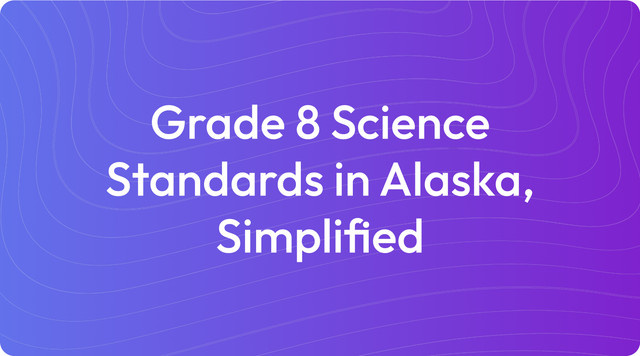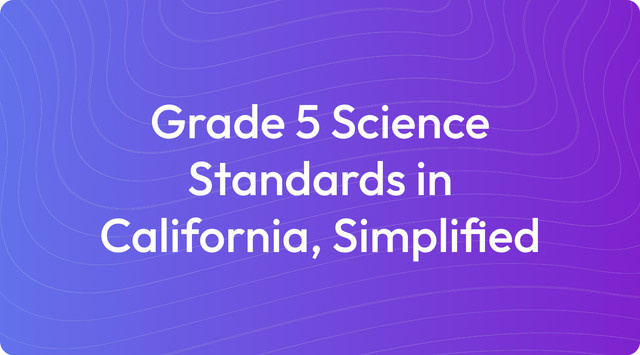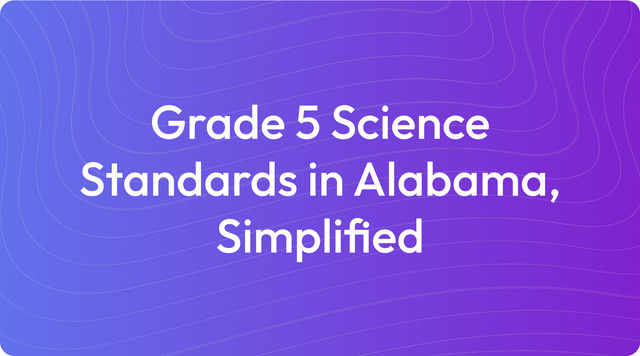Grade 5 Science Standards in Arkansas, Simplified
Matter, energy, and Earth systems are key in Grade 5 science in Arkansas . Learn the standards easily—read more on TeachShare!
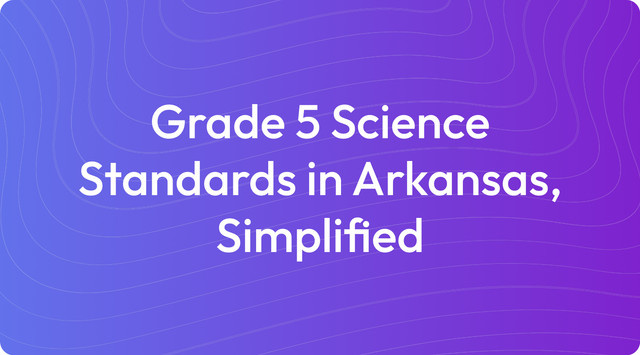
We understand that working with state standards is a significant part of planning your instruction. Our aim is to offer clear resources that connect these requirements to your daily classroom practice. To begin, let's look at what academic standards are and how they function.
Academic standards are learning goals that outline what students should know and be able to do at each grade level. For teachers, these standards provide the "what" to teach, but you determine the "how"—the curriculum and instructional methods used to meet those goals. For instance, the Grade 5 Science Standards in Arkansas list specific expectations, such as 5-PS1-1, which requires students to develop a model showing that matter is made of particles too small to see.
What Are Grade 5 Science Standards in Arkansas?
The Grade 5 Science Standards in Arkansas are built around three-dimensional learning, which integrates core ideas with scientific practices and concepts. These standards are organized into four main domains: Physical Science, Life Science, Earth and Space Science, and Engineering Design. Here is an overview of the specific learning goals for fifth-grade students:
Physical Science (PS)
- 5-PS1-1: Develop a model to describe that matter is made of particles too small to see.
- 5-PS1-2: Measure and graph properties of matter to identify materials.
- 5-PS1-3: Identify whether mixing substances causes a new substance to form.
- 5-PS1-4: Conduct experiments to demonstrate conservation of matter during changes.
- 5-PS2-1: Explain how gravity pulls objects toward Earth.
Life Science (LS)
- 5-LS1-1: Support claims that plants get materials for growth from air and water.
- 5-LS2-1: Model how matter cycles and energy flows in ecosystems.
Earth and Space Science (ESS)
- 5-ESS1-1: Support arguments about patterns in the apparent movement of the sun, moon, and stars.
- 5-ESS1-2: Represent data showing differences in day/night and seasonal patterns.
- 5-ESS2-1: Develop a model representing Earth’s systems and interactions.
- 5-ESS3-1: Describe how communities use science to protect Earth’s resources.
Engineering Design (ETS)
- 3-5-ETS1-1: Define a problem that can be solved through engineering.
- 3-5-ETS1-2: Develop and test solutions to a design challenge.
The framework for these standards is guided by the Next Generation Science Standards (NGSS), which are used as a foundation for the Arkansas K-12 Science Standards.
Key Tested Standards
For Grade 5 Science in Arkansas, key tested standards often focus on foundational concepts and performance expectations that prepare students for middle school. Assessments will likely cover the following standards:
Physical Science (PS)
- 5-PS1-1: Model that matter is made of particles too small to see
- 5-PS1-4: Demonstrate that matter is conserved during changes (e.g., melting, dissolving, mixing)
- 5-PS2-1: Explain how gravity affects objects on Earth
Life Science (LS)
- 5-LS1-1: Support the claim that plants get materials for growth from air and water
- 5-LS2-1: Model the movement of matter and energy in ecosystems (e.g., food webs)
Earth and Space Science (ESS)
- 5-ESS1-1: Identify patterns in the apparent movement of the sun, moon, and stars
- 5-ESS2-1: Model Earth’s systems and their interactions (e.g., water cycle)
- 5-ESS3-1: Explain how humans protect natural resources and the environment
These standards focus on modeling, investigations, and real-world applications, making them key areas for assessment.
Sources: Next Generation Science Standards, Arkansas Division of Elementary and Secondary Education
Example Learning Objectives for Unit Planning
Learning objectives translate broad standards into clear, measurable goals for your students. These student-friendly "I can" statements help focus your lesson plans by clarifying what students should be able to do by the end of a lesson.
Here are some examples for two key standards:
Standard: 5-PS1-4 (Conservation of matter during changes)
- I can measure the weight of matter before and after a change to show it stays the same.
- I can explain that matter is not created or destroyed, even when it changes form (e.g., melting, dissolving).
- I can conduct experiments to observe how matter changes and explain what happens to its weight.
Standard: 5-LS2-1 (Matter cycles and energy flows in ecosystems)
- I can describe how plants, animals, and decomposers interact in a food web.
- I can model how energy moves through an ecosystem (e.g., from the sun to plants to animals).
- I can explain how matter cycles in nature, like how plants use nutrients from the soil.
Key Changes & Updates
The Grade 5 Science Standards in Arkansas were updated in 2015 to align with the Next Generation Science Standards (NGSS). This update introduced a significant shift toward making science more hands-on and inquiry-based, focusing on how students apply knowledge rather than just memorizing facts. The new framework is built around what is known as three-dimensional learning, which helps students connect scientific concepts to real-world problems.
Here are the key updates you'll find in the current standards:
- A focus on three-dimensional learning: This integrates scientific practices (like investigating and modeling), core ideas (like matter and ecosystems), and crosscutting concepts (like cause and effect).
- A shift to performance expectations: Students are now asked to demonstrate their understanding by completing tasks, such as conducting experiments or designing models.
- An emphasis on real-world applications: The standards are framed around phenomena and questions that encourage students to explain the world around them.
- Greater inclusion of engineering design: Students are expected to define problems, develop solutions, and test their designs, connecting science to practical problem-solving.
Create with TeachShare
We know that keeping up with standards and creating engaging, differentiated materials for every student is a demanding part of your job. Our platform is designed to lighten that load, giving you the tools to build high-quality, standards-aligned lessons quickly and efficiently. We handle the heavy lifting of resource creation so you can focus more on what you do best: teaching. Start creating standards-aligned instructional resources with TeachShare now.
Frequently Asked Questions
To help you get acquainted with the Grade 5 Science Standards in Arkansas, we’ve answered some common questions:
1. What are the main topics covered in Grade 5 Science?
The standards are organized around four major areas. Students will explore:
- Physical Science: Properties of matter, conservation of matter, and gravity
- Life Science: Energy flow in ecosystems and how plants grow
- Earth and Space Science: Patterns in the movement of the sun, moon, and stars, as well as Earth’s systems and protecting natural resources
- Engineering Design: Creating solutions for real-world problems
2. What is three-dimensional learning, and why is it important?
Three-dimensional learning is an approach that weaves together three key elements: the practices of science and engineering (the “doing” part), crosscutting concepts that connect different scientific fields, and the core ideas of each discipline. This method is important because it encourages students to think like scientists, solve problems, and see how science applies to their own lives.
3. How do the standards incorporate hands-on learning?
The standards are designed to get students actively involved in science. You'll see them engaging in hands-on activities such as building models of the water cycle, measuring how matter changes, and designing ways to conserve resources.
4. How do these standards prepare students for middle school?
These standards build the essential skills your students will need for success in middle school science. By focusing on modeling, investigating, and analyzing data in fifth grade, they will be well-prepared to tackle more advanced topics like complex energy systems and Earth’s processes later on.
5. What are some key vocabulary words for Grade 5 Science?
Here are some of the core vocabulary words your students will learn, broken down by topic:
- Physical Science: matter, conservation, particle, gravity
- Life Science: ecosystem, energy flow, food web, decomposer
- Earth Science: climate, system, resource, cycle
Answer


